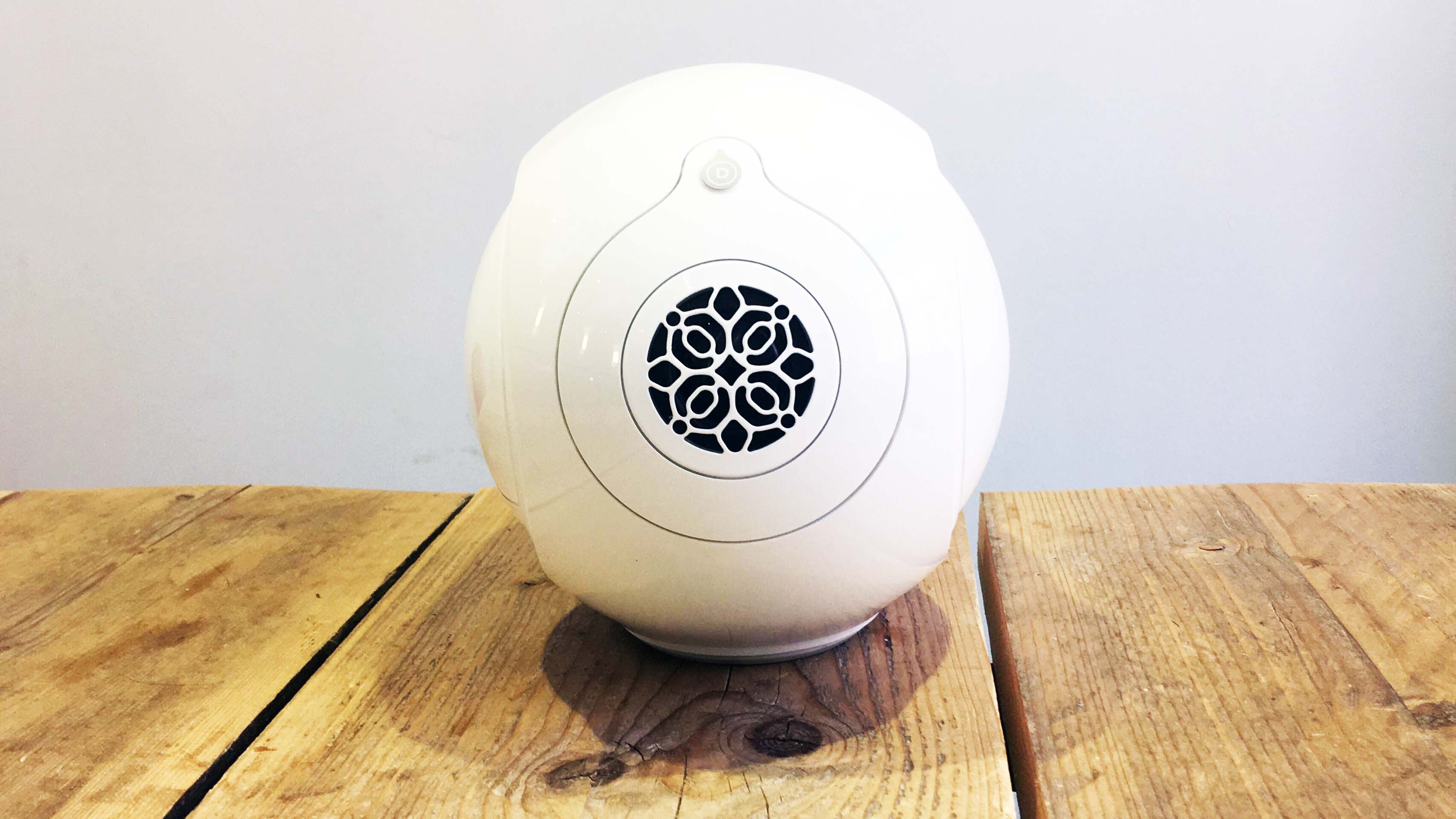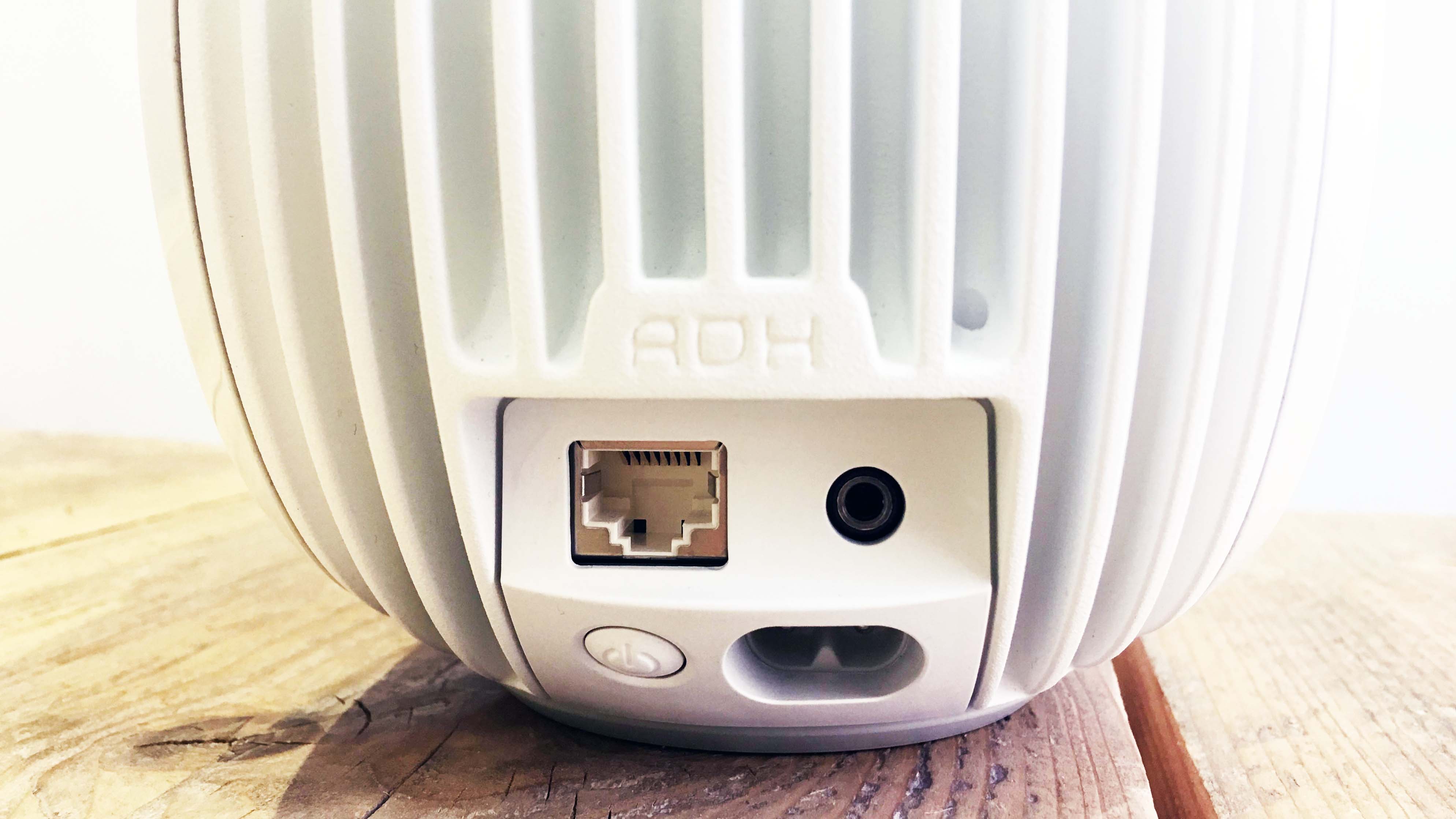TechRadar Verdict
With a unique look and room-filling power, the Devialet Phantom Reactor 900 comes close to justifying its big price tag.
Pros
- +
Mad design
- +
Powerful output
- +
Solid connectivity
Cons
- -
Very expensive
- -
Can sound cramped
Why you can trust TechRadar
Devialet's Phantom speaker line screams opulence. From their sci-fi stylings to their expressively wild side-firing bass reflex ports, they look unlike anything else on the market – but the speakers have also been big, heavy, and intimidatingly expensive, too.
The company is now looking to make its wares a little more approachable with two new speakers, the Devialet Phantom Reactor 900 and Devialet Phantom Reactor 600. We’re looking at the former of the two, with its 900W output compared to the latter’s 600W. Smaller and more affordable than the full-size Phantom speakers, the Phantom Reactor 900 still packs a punch, and still looks like a prop from Stanley Kubrick’s 2001: A Space Odyssey – and that’s no bad thing.
But by pointing the shrink ray at the full-size Phantom has any compromise been made? And is that sleek design worth the premium price tag?
[Update: The Devialet Phantom Reactor 900 has been given a name change – it's now known as the Phantom II. And, it's currently available in another color – Sage Green. There are only 1000 units, so it's pretty exclusive.]
Price and availability
The Phantom Reactor line up is available to buy now. Prices start at $999/ £990 / AU$1990 for the Phantom Reactor 600 and go up to $1299 / £1290 / AU$2490 for the Phantom Reactor 900, which is reviewed here.
It's still not cheap, but it is uniquely designed, offering superior audio quality over the majority of single standalone Bluetooth speakers, though not quite the audio performance you’d get from less lavishly-designed stereo systems of a similar price.
Keep that in mind if audio performance is your absolute priority, though to all but the most highly tuned ears, it’s a very pleasing unit.
You'll find it in stores including Selfridges, JohnLewis.com, Amazon UK and Harrods in the UK, and Corso Como, B8ta, Nordstrom, Microsoft Store, Barneys and Amazon in the US, as well as Mr Porter worldwide.

Design and connectivity
You won’t find a speaker that looks anything like the Phantom Reactor from any manufacturer other than Devialet – it’s a truly unique design.
Coming in either a gloss white finish or matte black, it looks a bit like some sort of space-aged vitamin pill, being broadly ovaloid in shape. The Devialet logo, cut from the chassis itself, sits like an eye on the front of the speaker, with ventilation grills curving down from the back.

Given its 219mm (length) x 157 mm (width) x 168 mm (height) size, it's an astonishingly loud system – comparable to a symphony orchestra in your living room if blasting at full volume.
Likewise, the 18Hz infra-bass would lead you to believe there's a dedicated subwoofer in the room – made all the more dramatic by the way the bass-reflex ports on either side of the Phantom Reactor pump air rhythmically and forcefully in time with the beat.
However, don’t confuse this for a portable speaker – you’re going to need a mains supply to power that mad output, and it remains deceptively heavy at 4.3kg.

Along the top of the speaker you’ll find five touch-sensitive capacitive buttons – volume up, volume down, play/pause, Bluetooth pairing / input selection and the link button that’s used when setting up the device with its accompanying control app.
They’re a welcome addition, given how all control of the Phantom line was determined by app alone in previous models.
Physical inputs now include a hybrid minijack and optical point for TVs, as well as an Ethernet connection if that’s your best bet for stable broadband. Wireless connectivity includes Bluetooth, AirPlay, UPnP and Spotify Connect, but you don’t get any support for voice assistants, be that Amazon’s Alexa, the Google Assistant or Apple’s Siri.
For the price, it feels like an oversight, given as they’re in basically everything these days. You’ll have to jump into the app to control the speaker from afar then, but it’s at least mercifully simple, with just playback controls and source options taking up the majority of the application.
All in, it’s a fantastic-looking speaker. If you like your tech to be as much talking point as gadget, the Phantom Reactor 900 will set tongues wagging.

Performance
Thankfully, the Phantom Reactor 900 is more than just a pretty face too – it sounds phenomenal, if falling just a little short of the price-to-performance ratio we’d hope for in a more-than-a-grand speaker.
Despite the small package and extreme volume levels, the Phantom Reactor 900 is able to deliver its output without as much as a hint of distortion as it approaches louder peaks.
Its Analog Digital Hybrid (ADH) amp delivers the quality of an analogue amp in a digital-sized package, while the company's Speaker Active Matching signal processing system retains detail even at the Phantom Reactor 900's 98db max volume.
Thanks to its 24bit/192kHz hi-res DAC and Wi-Fi connection, you’ve room to play around with high-resolution audio sources, too.
Bass impact will be a big draw here. Primal Scream’s Kill All Hippies from the XTRMNTR album is awash with processed guitars and samples, but when its bass line crunches in, the Phantom Reactor delivers it with weight, and taut energy.

It’s even more pronounced during the percussive ‘Why So Serious?’ element of Hans Zimmer’s Dark Knight soundtrack, where an intense sub bass movement holds its integrity immaculately, while still allowing the sharp stopwatch-like clicks to be present.
It doesn’t lack in detail with softer moments either. James Rhodes’ take on Claude Debussy’s Clair de Lune saw the Phantom Reactor 900 beautifully represent the piano piece’s twinkling highs and comforting mids, without smothering either section. There’s a dynamism present that can reveal details at both the most soft and dramatic moments.
But there is the sensation of everything feeling a bit narrow – bands crammed onto a soapbox rather than a stage. It remains a heartily enjoyable listen, but the design here does little to provide a more natural, wider sense of space.

Final verdict
Devialet’s Phantom Reactor 900 is a marvel to witness in action. There’s no other speaker out there (other than another Phantom, that is) that, through its design, can give the sense of kinetic action your music delivers. It’s futuristic, detailed, and fun.
It suffers in its soundstage though, lacking the width you’d hope to find in such a pricey speaker.
It makes the Devialet Phantom Reactor 900 difficult to wholeheartedly recommend on pure audio quality alone – but it’s a single black mark against its name, rather than one that sullies the whole.
It’s overall a marvelous piece of engineering, and an enjoyable audio device in its own right even when taking its striking looks out of the equation.
- The best wireless speaker 2019: find the best connected speakers for your home
Gerald is Editor-in-Chief of iMore.com. Previously he was the Executive Editor for TechRadar, taking care of the site's home cinema, gaming, smart home, entertainment and audio output. He loves gaming, but don't expect him to play with you unless your console is hooked up to a 4K HDR screen and a 7.1 surround system. Before TechRadar, Gerald was Editor of Gizmodo UK. He is also the author of 'Get Technology: Upgrade Your Future', published by Aurum Press.

